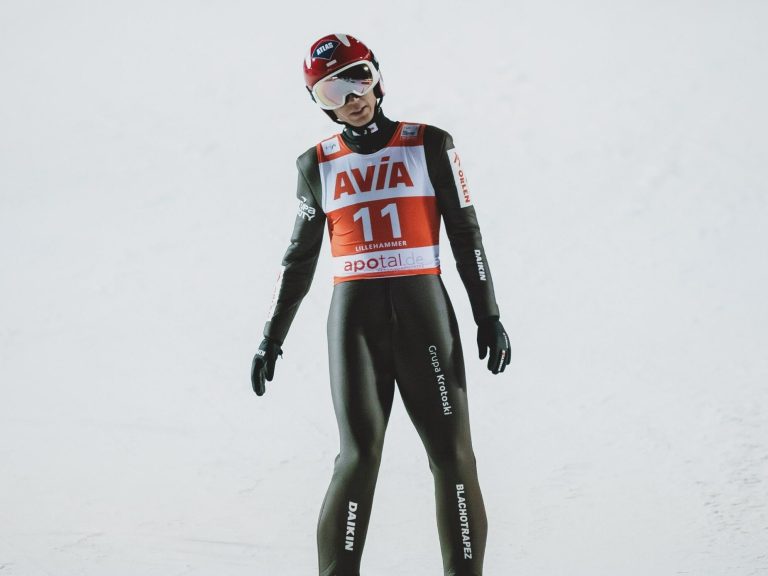Students of Polish technical universities are conquering space. Rockets and rovers are not everything

Rockets, rovers, balloons, satellites – thanks to technically advanced devices, Polish students have been conquering space for years. And this is not an exaggerated statement, because some mechanisms are successfully used by scientific entities. We checked what is currently happening at national universities of technology.
When the limits of the Earth are not enough, it’s time to reach higher. Enthusiasts tempted by the vastness of the universe decide to take such a step. Thanks to modern solutions, you do not have to physically be outside the atmosphere to explore space. For this purpose, the Student Space Exploration and Technology Initiative (SSETI) was established in 2000.
The association of 32 universities from 12 European countries, including Poland, aims to provide students with practical experience in working on space missions. SSETI, under the patronage of the European Space Agency (ESA), promotes astronautics through the construction of student minisatellites.
Polish students have been working on space projects for years
The involvement of young scientists in space projects has not been an issue in recent years, although thanks to programs, grants and popularization of this field, interest is growing every year. It is worth recalling the huge challenge that PW-Sat has become. On February 13, 2012, the first Polish artificial satellite was launched into orbit from the European spaceport in French Guiana. This historic project was created at the Warsaw University of Technology.
Currently, work is underway on PW-Sat3. A team of over 20 students is involved in the project, and the satellite launch is planned for 2023. According to scientists, the initiative is attracting interest at many significant events, including: at the International Astronautical Congress and IEEE Aerospace Conference in Montana. The plan of the ongoing mission assumes testing four subsystems prepared by members of the Student Astronautics Club.
A team fascinated by space also works at the Gdańsk University of Technology. Four young scientists represent the university on the Student Council of the President of the Polish Space Agency. The Council is an advisory body of POLSA, whose goals include, among other things, the integration of Polish students and the promotion of the space sector.
MOXIE – a project of students of the Gdańsk University of Technology
– The most important project we are working on is MOXIE. This is an attempt to recreate a modified version of the NASA experiment. It is an electrolyzer (a device in which electrolysis is carried out, i.e. the decomposition of electrolyte under the influence of an external source of electric current – ed.), which flew on the Perseverance rover to Mars and there produces oxygen from the Martian atmosphere. Such a device is one of the chances to maintain human habitats on this planet. We are testing this idea with other materials and plan to compare their performance. We managed to present preliminary results at last year’s Student Space Conference in Wrocław – says “Wprost” Martyna Czudec, a PhD student at the Institute of Nanotechnology and Materials Engineering and scientific supervisor of the Astrophysical Scientific Club of the Gdańsk University of Technology.
The university also achieved success in the STARDUST project, which uses stratospheric balloons as part of the REXUS/BEXUS competitions (organized by the German Space Agency DLR, the Swedish Space Agency SNSB and the Swedish state-owned company Swedish Space Corporation) and the Global Space Balloon Challenge, created by Stanford Space Initiative.
The participants of the experiment want to investigate the diversity and properties of the bacterial microflora of the stratosphere. “Scientific literature suggests the possibility of the presence of bacteria in the stratosphere that are highly resistant to large doses of UV and ionizing radiation. We do not rule out the possibility that they have previously unknown DNA repair mechanisms, which could be an inspiration for future scientists to use them in practice,” they argue. Previous research has shown that 26 percent the genetic material they collected were yet undescribed bacteria.
Members of the COSMO Scientific Club of the Krakow University of Technology also have reasons to be happy. In April 2023, they carried out a successful launch of the HABSat (High Altitude Balloon Satelite) stratospheric probe, which was intended to examine the intensity of cosmic radiation at various flight altitudes, as well as to check the degree of attenuation of this radiation by the atmosphere.

PUT Rocketlab announces the success of the HEXA 4 rocket
The success of PUT Rocketlab was also widely reported. This is a student research group operating at the Poznań University of Technology since December 2017. There are 70 students from various fields and faculties who share an interest in the development of space technologies. In June this year, PUT Rocketlab representatives appeared at the international rocket engineering competition – Spaceport America Cup 2023, intended for student rocket teams. 158 teams from 24 countries competed at the Spaceport America spaceport in New Mexico. The HEXA 4 hybrid racket they designed took first place in the 30k SRAD Hybrid/Liquid category and 8th place in the general classification. HEXA 4 is a sounding rocket whose goal is to reach an altitude of 9 km and return safely to earth.

The Ministry of Education and Science supports such initiatives as part of the “Student Science Clubs Creating Innovations”. So far, a total of over PLN 22 million has been transferred to students. The participation of young scientists from Poznań in the Spaceport America Cup was also co-financed by the MEiN program “Best of the best! 4.0”. Students participating in this project also build active control systems. According to scientists, the project should bring results in mid-2024.
A hybrid engine powered by a turbopump is being developed at the Poznań University of Technology
However, as Dr. Eng. tells us Bartosz Ziegler, PUT Rocketlab’s supervisor, the group’s activities do not end there.
– We are designing a hybrid engine powered by a turbopump – a device that de facto enables orbital flights today. These are devices whose power density (KW/kg machine) exceeds any other machines by orders of magnitude. They are used to inject propellants (usually fuel and oxidizer) into the rocket engine chambers under high pressure. The rocket is light thanks to thin-walled tanks. This is possible thanks to the low pressure there. However, the pressure in the engine compartment can be enormous, which results in high thrust and engine efficiency – the scientist explains to “Wprost”.
The expert explains that most of the rocket’s launch mass is fuel. – If it weren’t for the turbopumps, there would have to be high pressure in the tanks, so the walls would be so thick that it wouldn’t come off the ground. Not to mention decent performance. Turbopumps are interesting because due to their lack of use anywhere outside of rockets, there is a lack of published knowledge. Only a few companies produce them in the world, he adds. Ziegler announces that the first student rocket engine turbopump in the world will soon be built.
Students from the Wrocław University of Science and Technology build sounding rockets
Students from the Wrocław University of Science and Technology can also boast considerable achievements, where experimental sounding rockets are being created from scratch as part of the PoliWRocket project.
– Members of our group are responsible for various segments of the rocket, including the engine, electronics, recovery system, module with the research payload and the structure of the rocket that connects all the elements. To do this, they use knowledge in the field of physics, chemistry, electronics, mechanics, hydrostatics, pneumatics, materials science and many others. So far, we have managed to construct eight main rockets and conduct 17 successful flights. In addition to the main rockets, which we take to competitions in the United States or Portugal, members of our group design and make smaller rockets, often used to test selected design solutions, which we can later use in the main project – says Wiktoria Mrowiec, PR & Marketing Leader to “Wprost”. PWr in Space.
Currently, work is underway on the R5 “Aurora” rocket, whose appearance and name refer to the northern lights. The 4-meter-high structure weighs approximately 32 kg, and its heart is a hybrid engine in which the reaction between solid fuel (resin with metallic particles) and a gaseous oxidant (nitrous oxide) takes place. – We are currently also developing a model of a liquid fuel engine, which will revolutionize the way we power our future structures – adds Wiktoria Mrowiec.
The OFF-ROAD Unconventional Vehicles Scientific Club has also been operating at the same polytechnic since 2009. The team, consisting of 40 members, is known primarily from Project Scorpio, i.e. Mars rovers, but has also implemented other projects, including: the Eagle Mars lander or the Twardowsky Martian colony.
The Project Scorpio rover is intended to detect the presence of life
– Our latest project is the construction of a new Mars rover, Scorpio 8, which will be improved based on the new experience gained over the last two seasons. We hope that this will allow us to achieve even better results in the 2023/2024 season. This year we are focusing on improving the suspension and mast systems, which allow us to drive on difficult terrain, communicate with operators and autonomous driving of the robot. We have recently completed the construction of a Raman spectrometer, which allows us to examine soil samples during the competition to detect the presence of life, says Zofia Stypułkowska, president of the OFF-ROAD Scientific Club, to “Wprost”.
Tests prove that the instrument has a good chance of working well beyond our planet. Members of the club were the first in the history of the competition to use it to examine samples collected on a mobile research platform and send the data for interpretation by scientists.
Young scientists can boast of successes in international competitions. – In March, for the first time in the history of the club and the entire country, we managed to take part in the Australian version of the competition. It is unique, not only because of the place where the competition takes place, but above all because of the emphasis that the organizers put on the exploration not of Mars, but of the Moon. The Australian space agency is preparing to send its first space mission to the Moon, and keeping up with the times, the organizers are also focusing on Space Mining and water extraction from the regolith. During the competition, our team did great, every time we were ready to start ahead of time, which no other team managed to do, and we did not have any major failures – reports Zofia Stypułkowska.
The multitude and diversity of projects on which students of Polish technical universities work under the supervision of scientists prove the industry’s demand for new solutions. This market is constantly developing, and grants provide the opportunity to conduct tests in conditions mirroring those in space. However, it is not only the budget but the commitment and persistence of the young staff that can bring the expected success.






